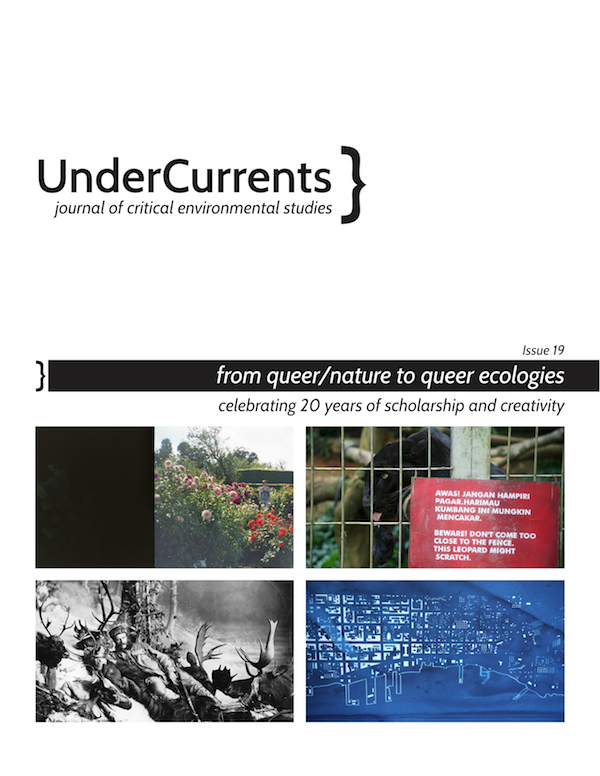Dark Ecology and Queer, Amphibious Vampires
DOI:
https://doi.org/10.25071/2292-4736/40260Keywords:
Dark ecology, queer theory, vampires, deconstruction, amphibiansAbstract
This paper argues that early vampire narratives can be reread as queer ecological fictions, darkly re-imagining the human as a liminal, amphibious entity. I highlight the importance of the amphibian—a slippery, ambiguous creature—to contemporary eco-deconstructive accounts that seek to disrupt and queer species categorizations, focusing in particular on Timothy Morton’s notion of “dark ecology” (2007). Early vampire literature, I argue, similarly deconstructs the distinction between different species through its erotic depictions of enmeshed ecologies. Analyzing the new blood-relations established in Bram Stoker’s Dracula (1897) and the figure of the queer female vampire described as “amphibious” in Sheridan Le Fanu’s Carmilla (1872), I suggest that vampire narratives depict dark new ecologies, establishing an “in-betweeness” shared by the living and the undead. The final part of this paper considers the importance of loss to current theorizations of queer ecology: Catriona Mortimer-Sandilands (2010) has recently advocated a state of suspended mourning for what has been destroyed by anthropocentric and homophobic violence. I posit the haunting figure of the vampire as one example of literature’s “non-normalizing relationship to the past” (Mortimer-Sandilands)—a relation of return that might form an important part of queer, ecological resistance to current practices of unmarked destruction.
Downloads
Published
How to Cite
Issue
Section
License
Authors retain copyright over their work and license their work for publication in UnderCurrents under a Creative Commons Attribution 4.0 International License (CC BY 4.0). This means that the work is available for commercial and non-commercial use, reproduction, and adaptation provided that the original authors are credited and the original publication in this journal is cited, following standard academic practice.


